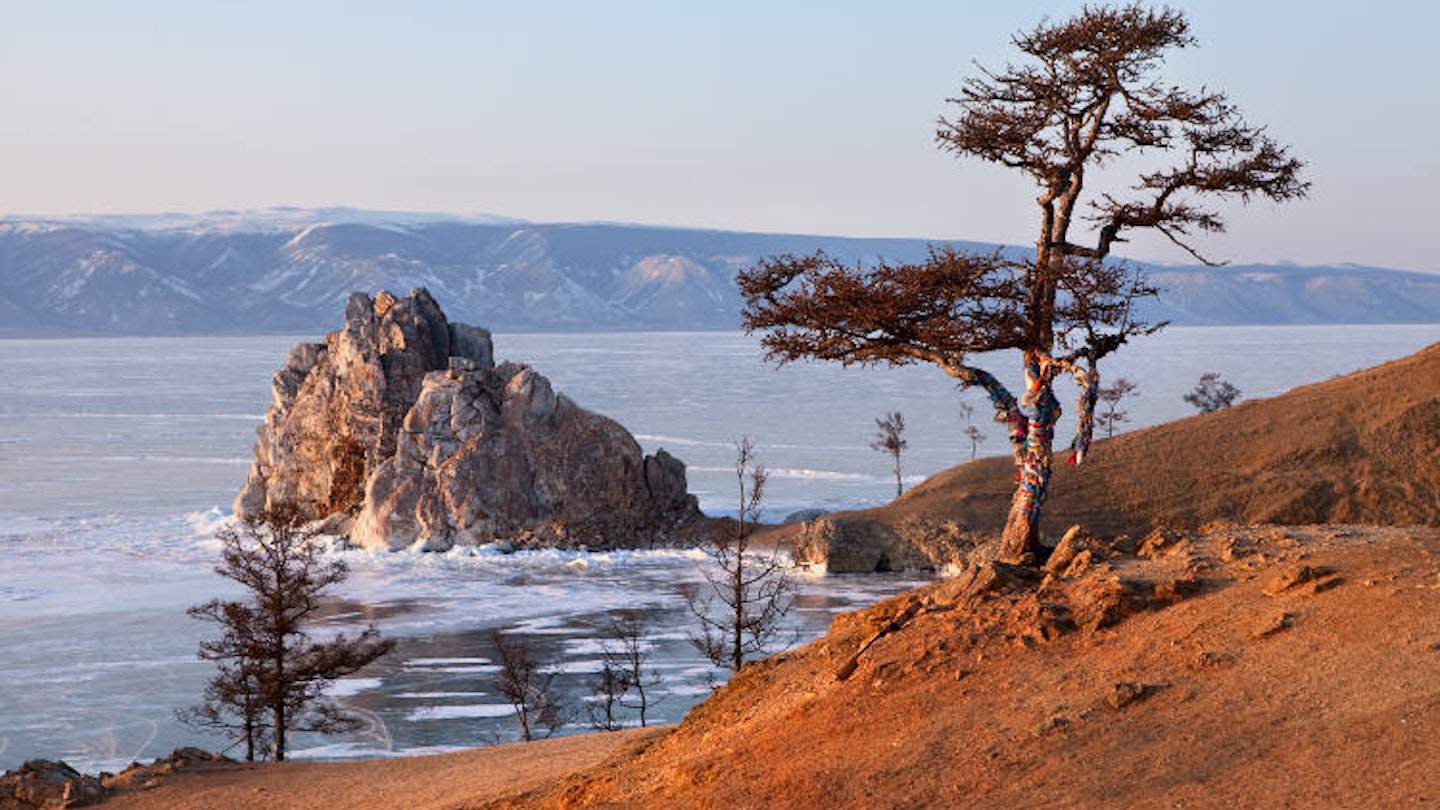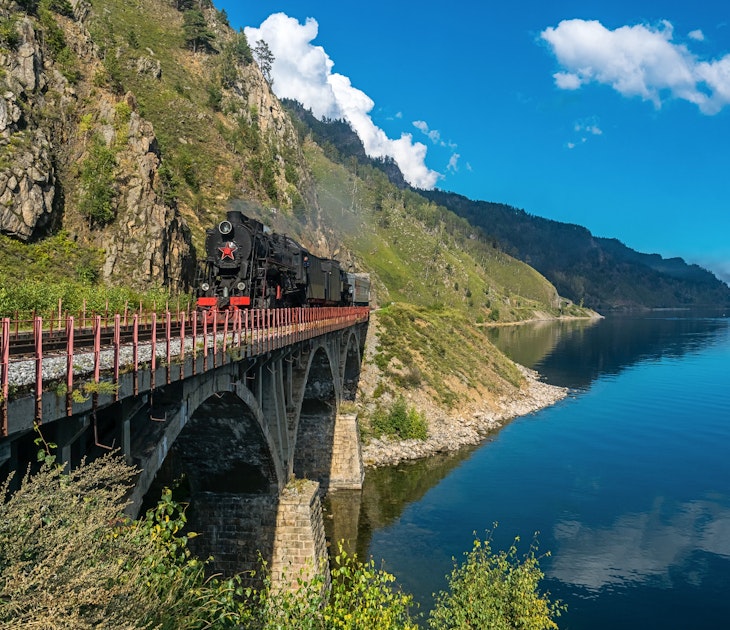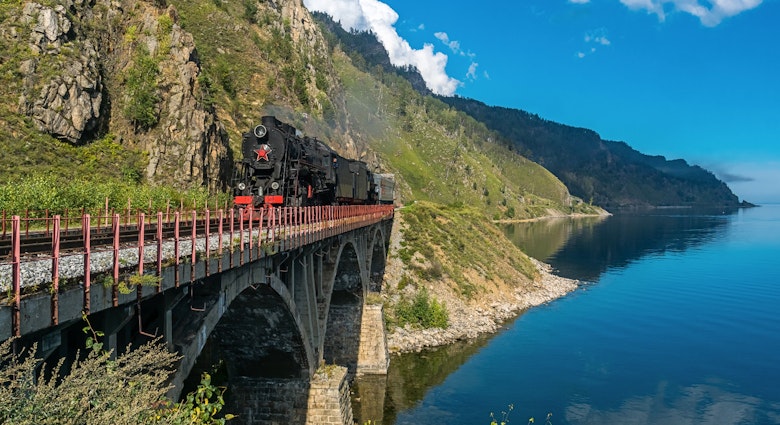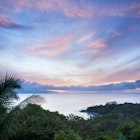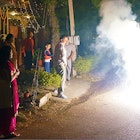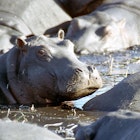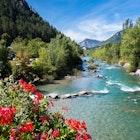Mention Siberia and there are immediate thoughts of unrelenting cold and an unforgiving landscape. Yet Lake Baikal, located in Siberia, is rich in beautiful contradiction to the stereotype. The ancient and deep lake is a deep blue of the purest water, surrounded by sharp mountains and amazing wildlife. Nature aside, the region is also rich with culture – home to the dissenting Decembrists, Buddhists and Buryat ethnic minority.
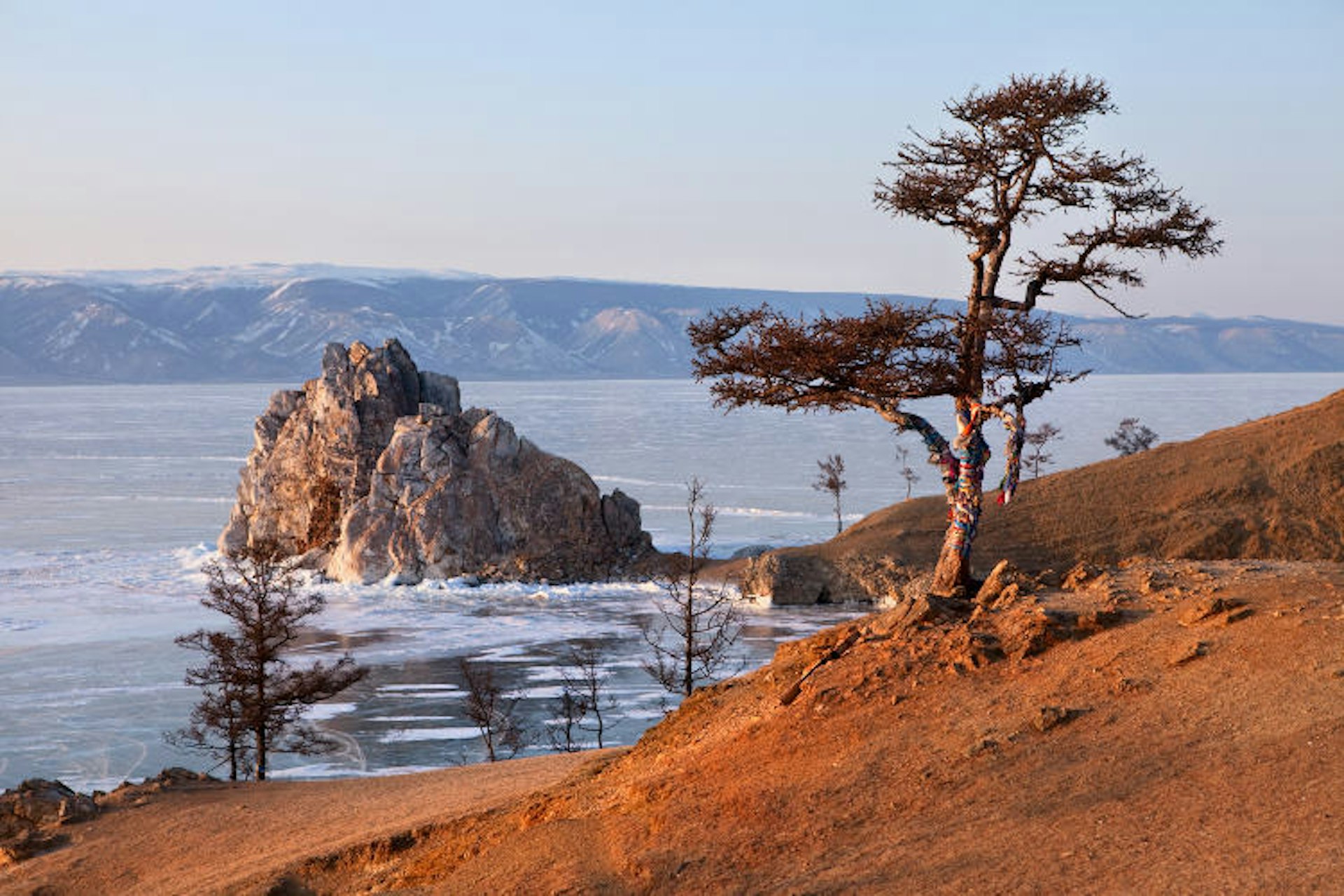
Irkutsk, unofficial capital and home to mutineers
Irkutsk, the unofficial capital of the Baikal region, is both a modern city and an excellent introduction to Siberia’s past. Irkutsk Regional Museum showcases Evenk artefacts and shamanist ritual items and the main square retains a statue of Lenin. The smattering of attractive timber houses dates back to the time when the Decembrists, mutinous Russian aristocrats, were sent into exile by the Tsar. Look for the Volkonsky House-Museum, the most impressive example of this architectural style.
An island home for sunbathing seals
Indulge your wilderness-conquering fantasies by trekking and camping wild on the dramatic cliffs and secluded sandy bays of Olkhon, Lake Baikal’s largest, sparsely inhabited island. Alternatively, base yourself at Nikita’s Homestead in lively Khuzhir and admire Shaman Rock, the island’s holiest site for Buryat, the Siberian Mongol group. Visit the Khoboy peninsula in an antiquated Soviet army jeep to view the largest of the shaman ritual sites and spot some Nerpa (or Baikal) seals sunbathing on the rocks below.
Hike the Great Baikal Trail
The Great Baikal Trail project aims to eventually encircle Baikal with a series of trails. You can currently hike through pine forest between the villages of Listvyanka and Bolshiye Koty, or from the picture-perfect fishing village of Baikalskoye to the cold Lake Slyudyanskoye via an attractive cliff-edge path. The most picturesque of all is the steep trail to the top of the Svyatoy Nos peninsula, with stupendous 360-degree views across Baikal and its islands.
Grab a meal in Listvyanka
Listvyanka, with cheerful wooden cabins spread out across three lakeside valleys, is the most popular of Baikal’s villages. You can sample smoked omul (Baikal whitefish) and shashlyk (grilled meat skewers) at the waterside market and picnic on the pebble beach with weekending Russians. Hike up to the viewpoint for excellent views of the lake, admire the sculptures made of Soviet car parts at Retro Park, or get up close and personal with Baikal’s aquatic life at the Baikal Museum aquarium.
Swim your way to youth
Legend has it that Baikal’s waters have miraculous properties, and that a swim here gives you five extra years of life. The best places to take a dip include the golden sandy beaches along the northern shore of Olkhon Island, where the water of Maloye Morye (Little Sea) is shallowest and warmest, and the long pebble beach in Severobaikalsk. Listvyanka is one of the most popular spots for year-round exploration of the lake’s depths with Baikal Tek.
The Russian home of Buddhism
The Ivolginsk Datsan is the largest and most important Buddhist centre in Russia. As you walk around this complex of brightly coloured temple buildings and simple monastic dwellings, keep a look out for white stupas and trees festooned with colourful prayer flags. Spin the prayer wheels, admire the giant Buddha statue with the offerings of coins, coloured silks and rice and listen to the chanting of the monks amidst clouds of incense smoke.
Take up winter sports
Between December and April, Lake Baikal freezes over, giving rise to hovercraft rides on the ice, ice fishing, snowmobiling and ice-biking, which uses bikes fitted with special tyres. In Listvyanka, the Baikal Dog Sledding centre arranges dogsled rides through the winter forest. If you want to hike across the ice from the mainland to Olkhon Island, enterprising locals set up yurts on the ice, so that hikers can break up the 20km trek mid-way.
Wild frontier of the Barguzin Valley
The remote Barguzin Valley – an expanse of open steppe punctuated by salt lakes, small Evenk and Buryat villages, and shamanic sites situated against the backdrop of craggy Barguzinsky Mountain range – is the eastern and the least accessible of Baikal’s shores. With a frontier feel, it rewards the adventurous undaunted by the prospect of long and infrequent bus journeys and those who relish camping in the wild.
Ride the Circumbaikal Railway
The short, picturesque Circumbaikal Railway running between Slyudyanka and Port Baikal along Baikal’s southern tip makes a great day trip and allows you to appreciate the sheer feat of engineering that made it possible. As the steam engine chugs along the shore, barely faster than walking pace, count the number of tunnels and bridges created after years of blasting and chiselling through cliffs.
Hit the hot springs
The land around Lake Baikal is alive with hot springs, particularly in the little spa town of Arshan, picturesquely situated in the foothills of the snow-peaked Eastern Sayan Mountains. The town itself is ramshackle, but the faded grandeur of the 1920s Arshan Spa does not detract from the medicinal properties of the mildly sulphurous mineral water (bathing in it allegedly cures a multitude of ills).
